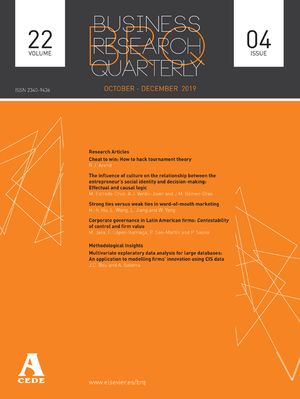El estudio de la supervivencia empresarial ha sido un tema relevante tanto en el ámbito académico como empresarial. Actualmente los trabajos se centran en examinar por separado las distintas formas que tiene una empresa de salir del mercado. Esta investigación pretende comparar y examinar las diferencias entre los factores que determinan dos tipos de salida del mercado: el fracaso empresarial y el cese de actividad. El estudio se lleva a cabo para el sistema de franquicia, donde la decisión de abandonar la actividad franquiciadora ha sido escasamente estudiada. En concreto se examina el efecto del momento de entrada, la estructura organizativa y la política de incentivos sobre ambas salidas del mercado, a partir de una muestra de 387 empresas franquiciadoras operativas entre 1986 y 2004. Los resultados permiten observar que las empresas que fracasan como organización son seguidoras, con experiencia media y una elevada centralización y control de la cadena; mientras que las que optan por abandonar el mercado pertenecen al grupo de empresas seguidoras o primera mayoría, con escasa experiencia, baja expansión y un elevado nivel de centralización.
Survival has been a relevant topic for academics and practitioners. Nowadays, the research is focused on analysing the different types of firm failure. This article aims to compare and examine the differences between the key factors of two types of market exit: organizational mortality and discontinuance the activity. This issue is particularly relevant in franchising. While the first type of exit has been broadly examined, the determinants of the franchisor decision that lead to stop the franchising activity has been rarely studied. Basing on the literature of firm survival and on franchising literature, we analyze entry timing, organizational structure and incentives policy as determinants of both types of market exit. We use data of 387 franchisors from 1986 till 2004. Results suggest that firms that suffer organizational failure are followers, with a medium level of experience and a high proportion of companyowned outlets. On the other hand, firms that decide to disrupt the franchising activity are followers or entrants at the early majority and show low experience in the market, low system size and high proportion of company-owned outlets.
Este trabajo ha contado con la ayuda financiera recibida del Ministerio de Ciencia y Tecnología (SEJ 2005-05968/ECON) y del Gobierno de Aragón (S09, PI 138/08 y PM062), a través del reconocimiento de las autoras del trabajo como miembros del grupo de investigación de excelencia Generés. Asimismo las autoras desean agradecer expresamente los comentarios recibidos por dos evaluadores anónimos a una primera versión de este trabajo.




